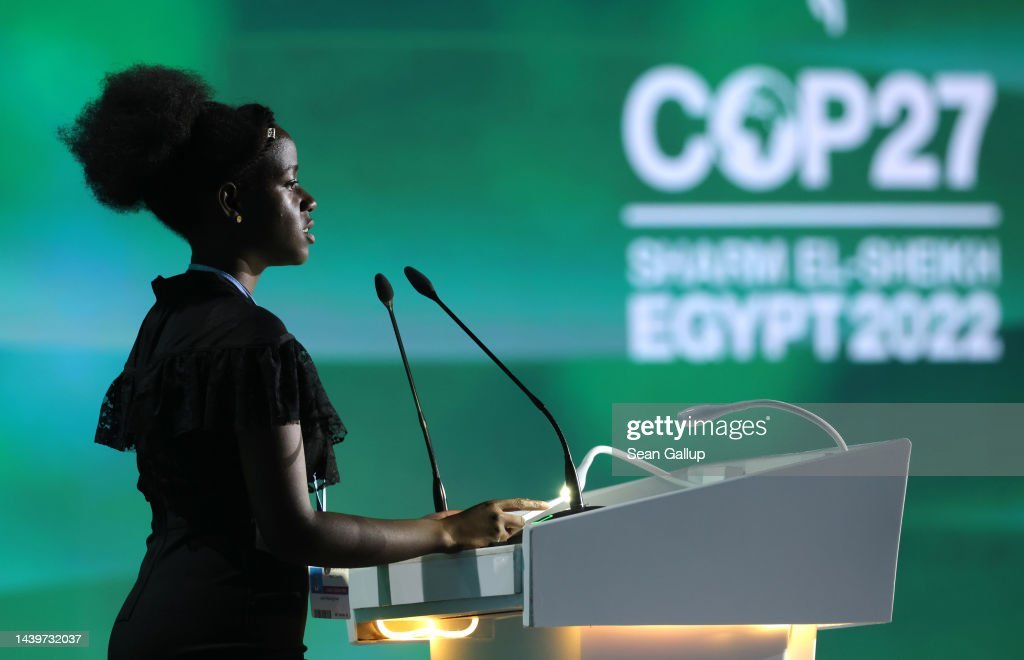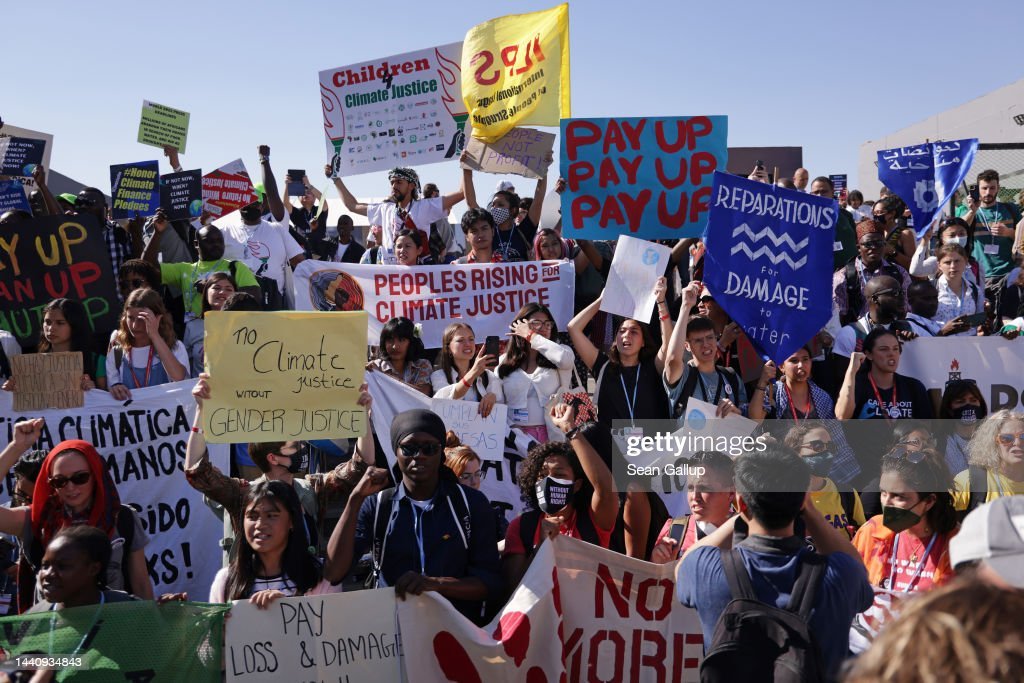COP27: Recap & Key Takeaways
COP27, the UN Climate Change Conference, concluded this past Sunday, Nov 20th with an unexpected, last-minute landmark deal on climate funding. Wealthy nations committed to creating a “loss and damage” fund to help poor and vulnerable countries that are heavily impacted by climate disasters. Decades in the making and seemingly elusive, the breakthrough paved the way for payments of $100B per year to developing countries. At the same time, committing to the deal came at the expense of more stringent commitments for limiting global warming to 1.5 degrees Celsius. As Reuters notes, the “price paid for a deal on the loss and damage fund was most evident in the language around emission reductions and reducing the use of polluting fossil fuels – known in the parlance of U.N. climate negotiations as "mitigation." While less glitzy than COP26, COP27 was nevertheless notable for several other achievements. Scroll below for a recap of the key milestones and curated articles enclosed below:
Countries launched a package of 25 new collaborative actions in five key areas: power, road transport, steel, hydrogen and agriculture.
UN Secretary-General António Guterres announced a USD 3.1 billion plan to ensure everyone on the planet is protected by early warning systems within the next five years.
The UN Secretary-General’s High-Level Expert Group on Net-Zero Commitments published a report at COP27, serving as a how-to guide to ensure credible, accountable net-zero pledges by industry, financial institutions, cities and regions.
The G7 and the V20 (‘the Vulnerable Twenty’) launched the Global Shield against Climate Risks, with new commitments of over USD 200 million as initial funding. Implementation is to start immediately in a range of pathfinder countries.
Announcing a total of USD 105.6 million in new funding, Denmark, Finland, Germany, Ireland, Slovenia, Sweden, Switzerland, and the Walloon Region of Belgium, stressed the need for even more support for the Global Environment Facility funds targeting the immediate climate adaptation needs of low-lying and low-income states.
The new Indonesia Just Energy Transition Partnership, announced at the G20 Summit held in parallel with COP27, will mobilize USD 20 billion over the next three to five years to accelerate a just energy transition.
Important progress was made on forest protection with the launch of the Forest and Climate Leaders’ Partnership, which aims to unite action by governments, businesses and community leaders to halt forest loss and land degradation by 2030.
REUTERS — “COP27 Delivers Climate Fund Breakthrough at Cost of Progress on Emissions”
SHARM EL-SHEIKH, Egypt, Nov 20 (Reuters) - “Countries closed this year's U.N. climate summit on Sunday with a hard-fought deal to create a fund to help poor countries being battered by climate disasters, even as many lamented its lack of ambition in tackling the emissions causing them.
The deal was widely lauded as a triumph for responding to the devastating impact that global warming is already having on vulnerable countries. But many countries said they felt pressured to give up on tougher commitments for limiting global warming to 1.5 degrees Celsius in order for the landmark deal on the loss and damage fund to go through.”
Delegates - worn out after intense, overnight negotiations - made no objections as Egypt’s COP27 President Sameh Shoukry rattled through the final agenda items and gavelled the deal through.
Despite having no agreement for a stronger commitment to the 1.5 C goal set in the 2015 Paris Agreement, "we went with what the agreement was here because we want to stand with the most vulnerable," Germany's climate secretary Jennifer Morgan, visibly shaken, told Reuters.
When asked by Reuters whether the goal of stronger climate-fighting ambition had been compromised for the deal, Mexico's chief climate negotiator Camila Zepeda summed….”
Continue article here
THE GUARDIAN — “What are the Key Outcomes of Cop27 Climate Summit?”
Loss and damage
Developing countries have been seeking financial assistance for loss and damage – money needed to rescue and rebuild the physical and social infrastructure of countries devastated by extreme weather – for nearly three decades. Finally achieving agreement on a fund is a major milestone. Now comes the difficult part – the fund must be set up, and filled with cash. There is no agreement yet on how the finance should be provided and where it should come from.
1.5C
The 2015 Paris agreement contained two temperature goals – to keep the rise “well below 2C” above pre-industrial levels, and “pursuing efforts” to keep the increase to 1.5C. Science since then has shown clearly that 2C is not safe, so at Cop26 in Glasgow last year countries agreed to focus on a 1.5C limit. As their commitments on cutting greenhouse gas emissions were too weak to stay within the 1.5C limit, they also agreed to return each year to strengthen them, a process known as the ratchet. At Cop27, some countries tried to renege on the 1.5C goal, and to abolish the ratchet. They failed, but a resolution to cause emissions to peak by 2025 was taken out, to the dismay of many.
Gas
The final text of Cop27 contained a provision to boost “low-emissions energy”. That could mean many things, from wind and solar farms to nuclear reactors, and coal-fired power stations fitted with carbon capture and storage. It could also be interpreted to mean…”
Continue article here.
UNEP — COP27 Ends with Announcement of Historic Loss and Damage Fund”
“In negotiations that went down to the wire over the weekend, countries reached a historic decision to establish and operationalize a loss and damage fund, particularly for nations most vulnerable to the climate crisis.
The agreement was struck early Sunday morning as leaders concluded talks at the two-week-long United Nations Climate Conference (COP27).
While many details remain to be negotiated, the fund is expected to see developing countries particularly vulnerable to the adverse effects of the climate crisis supported for losses arising from droughts, floods, rising seas and other disasters that are attributed to climate change.
While the negotiated text recognized the need for financial support from a variety of sources, no decisions have been made on who should pay into the fund, where this money will come from and which countries will benefit. The issue has been one of the most contentious on the negotiating table.
Adapting to the climate crisis — which could require everything from building sea walls to creating drought-resistant crops — could cost developing countries anywhere from US$160-US$340 billion annually by 2030. That number could swell to as much as…”
Continue article here.
CARBON BRIEF — “COP27: Key Outcomes Agreed at the UN climate talks in Sharm el-Sheikh”
“The COP27 summit in the Egyptian resort town of Sharm el-Sheikh made history when developing countries secured a new fund to support the victims of climate disasters.
Yet this was tempered by a wider agreement – the “Sharm el-Sheikh implementation plan” – that excluded any mention of winding down the use of fossil fuels. It also provided little indication that nations were serious about scaling up efforts to cut emissions.
Talks at the second most attended COP of all time went deep into extra time, as parties attempted to reach a deal that could secure consensus.
The Egyptian presidency had promised an “implementation COP” that would see the pledges of the past give way to balanced action on tackling climate change and preparing for its effects.
In reality, the results were a mixed bag, achieving more on the impacts of climate change than on its causes.
The decision to set up a new fund for “loss and damage” resulting from climate change marked the climax of a decades-long effort by small island states and other vulnerable nations.
But the EU and its allies voiced strong concerns about an outcome that did little to advance efforts to stay below 1.5C, beyond what had been agreed at COP26 in Glasgow last year.
All of this took place against a backdrop of overlapping global food, energy and debt crises, and…”
Continue article here.
BBC — “Five Key Takeaways from COP27”
1: The biggest win on climate since Paris...?
A new funding arrangement on loss and damage - a pooled fund for countries most affected by climate change - has been hailed as a "historic moment". It can be seen as the most important climate advance since the Paris Agreement at COP 2015.
For decades the victims of a changing climate were the ghosts the richer world just couldn't see.
Money has long been available to cut carbon or help countries adapt to rising temperatures - but there was nothing for those who had lost everything.
"For someone who has seen his home disappear in the floods in Pakistan, a solar panel or a sea wall isn't much use," explained Harjeet Singh from the Climate Action Network.
The COP27 decision on loss and damage won't fix that immediately.
The fund comes with many unknowns. What will be the criteria to trigger a payout? Where will the money come from, and will it be enough?
Compare the EU's €60m contribution against the $30bn costs that Pakistan faces.
But establishing the loss and damage fund is about more than money or compensation or reparations - it is really about solidarity and rebuilding trust.
Despite the dramatic impacts the rising temperatures will inflict on the world, this fund signals that no one will be left behind.
It is a concrete demonstration that we really are all in this together.
2: ...Or the biggest loss on climate change since Paris?
For many countries, the last hours of the negotiation represent a real step backwards in the fight against rising temperatures.
While the loss and damage text represented a big win, the overall cover decision is being seen as a missed opportunity in the fight against climate change.
The man who ran the COP26 negotiations in Glasgow put it bluntly.
"Emissions peaking before 2025, as the science tells us is necessary. Not in this text," said Alok Sharma.
"Clear follow-through on the phase down of coal. Not in this text."
As well as all these limitations there was also a…”
Continue article here.
CGTN — “COP27 impact: Achievements and Setbacks from Climate Summit”
“A hard-fought final agreement at the COP27 climate summit was reached early on Sunday that sets up a fund to help poor countries being battered by climate disasters - but does not boost efforts to tackle the emissions causing them.
The UN COP27 climate summit in Egypt drew praise for the creation of a "loss and damage" fund to help vulnerable countries cope with the destructive impacts of global warming.
But there was also anger over a failure to push further efforts on cutting emissions to keep alive the aspirational goal of limiting global warming to 1.5C from pre-industrial levels.
After tense negotiations that ran through the night, the Egyptian COP27 presidency released the final text for a deal and simultaneously called a plenary session to quickly gavel it through.
The swift approval for creating a dedicated loss and damage fund still left…”
Continue article here.
EDITOR’S NOTE: TBG provides global solutions focused on Sustainability, Innovation and Impact. We leverage a Global Network comprised of more than 1000 experts in over 150 countries. Through TBG Consulting, TBG Global Advisors, TBG Purpose and TBG Capital, we undertake global projects — from Kenya to Kazakhstan — and transform challenges into opportunities.



